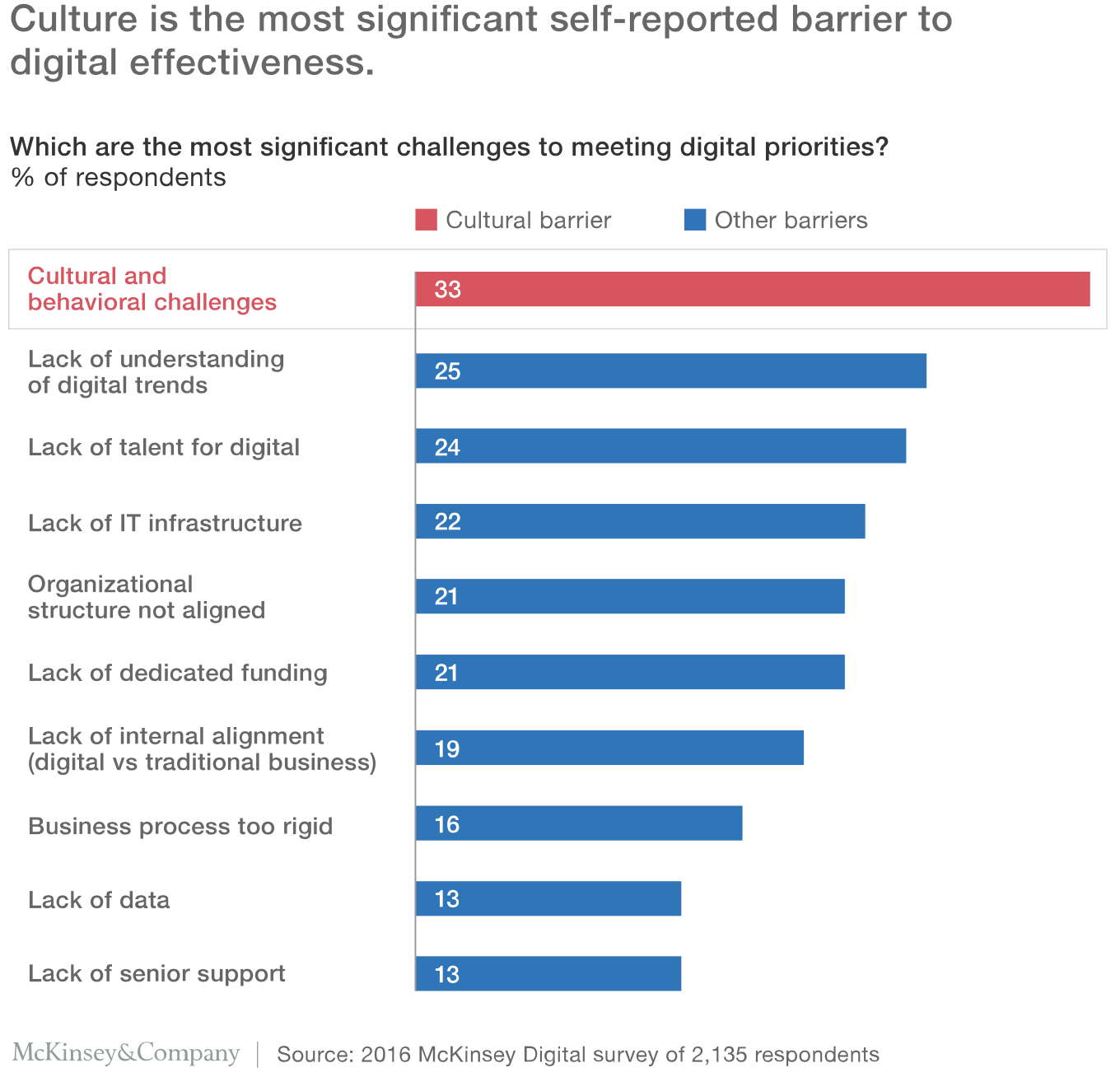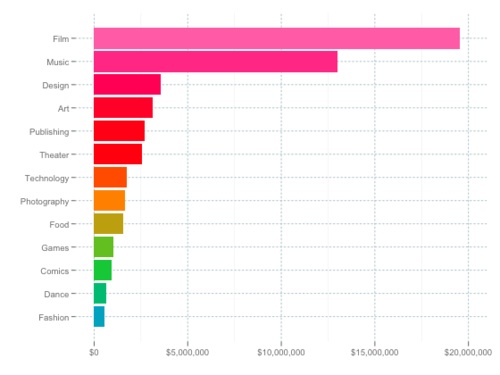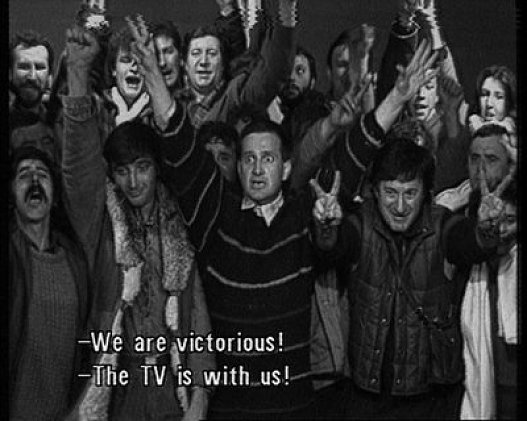A while back I posted this list (below) from McKinsey showing a ranked order of challenges with regards to meeting digital priorities. Now, I’d like to add to that an initiative from colleagues of mine (with whom I also collaborate on the project) that seeks to spread solutions for how to deal with this situation.

The initiative I’m referring to is a Kickstarter Campaign for a series of books that’s a part of a collaborative project called The Book of Collaboration. A project that is more than a book.
The need for working human-oriented
The basic premise for the project is quite depressing: Only 15% of employees are engaged… How about that for starting point when really needing to change, transform, build and all those things we need right now…
Now to the solutions. The project is based on 5 key pillars that help you ask better questions with regards to the diagram above and most business challenges. They help you work with what you can affect and not just the outcomes. If you look at the above items, they are the equivalent of lagging indicators, whereas the 5 pillars help you work with leading indicators that can actually be affected. Kind of like happiness correlating to innovation output. Just looking at output won’t help you affect or control it. Ok.
- Reinforcing a human-oriented culture and building trust
- Applying a growth mindset, unlearning, and learning in new ways
- Creating effective teams and collaborating for real
- Making everyone leaders and focusing on growing facilitation skills
- Re-inventing leadership and organizations – with engagement as core
Leaders: mind your toolbox
If you’re a typical leader it’s unusual to you, you don’t immediately have tools that come to mind and you might think it’s fluff. If you’re an interested, great future leader, you understand the need to include this in your toolbox and catalogue of methods. I’m basing this on my day-to-day work from within, and not looking in from the outside. It’s not even debatable and it’s easy to see.
The good thing with this diagram is that the number one item – culture and behavior – indicates the realization of a human-oriented focus as a prerequisite. The challenge is still how this is done, but that’s a better problem to have. And that’s the aim of the project, so go back it if you’re smart.



